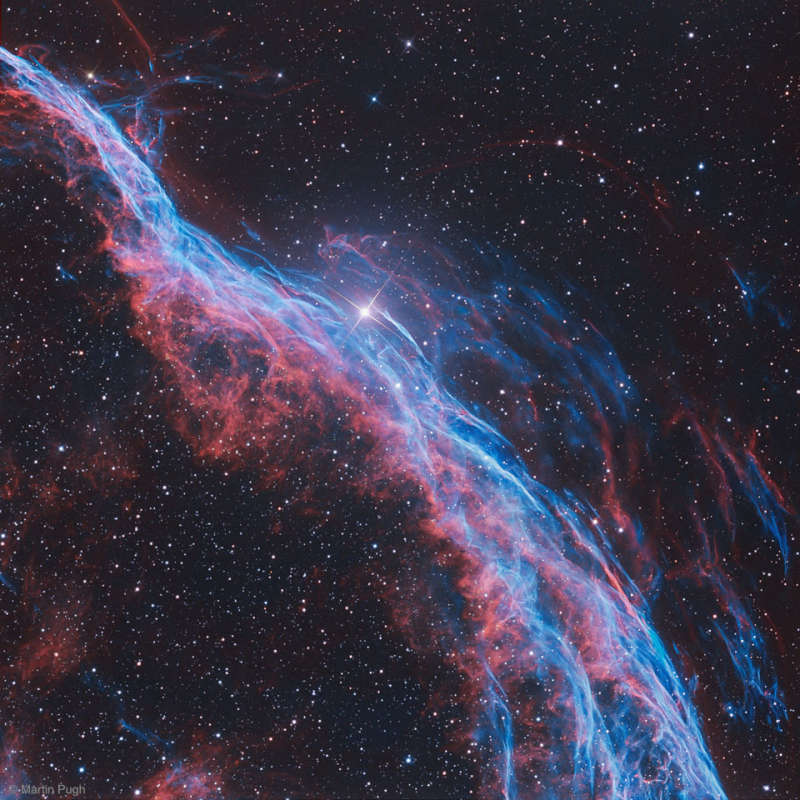Credit & Copyright: Martin Pugh
(Heaven's Mirror Observatory)
Explanation:
Ten thousand years ago, before the dawn of recorded human history,
a new light would have suddenly have appeared in the
night sky and faded after a few weeks.
Today we know this light was from a
supernova,
or exploding star,
and record the expanding debris cloud as the
Veil Nebula, a
supernova remnant.
This sharp telescopic view is centered on a
western
segment of the
Veil Nebula cataloged as
NGC 6960 but less formally known as the Witch's Broom Nebula.
Blasted out in the cataclysmic explosion, the interstellar shock wave plows
through space sweeping up and exciting interstellar material.
Imaged with narrow band filters, the
glowing filaments are
like long ripples in a sheet seen almost edge on,
remarkably well separated into atomic hydrogen (red)
and oxygen (blue-green) gas.
The complete supernova remnant lies about 1400
light-years away towards the
constellation Cygnus.
This Witch's Broom actually spans about 35 light-years.
The bright star in the frame is
52 Cygni,
visible with the unaided eye from
a dark location but unrelated to the ancient supernova remnant.
1999 2000 2001 2002 2003 2004 2005 2006 2007 2008 2009 2010 2011 2012 2013 2014 2015 2016 2017 2018 2019 2020 2021 2022 2023 2024 2025 |
Yanvar' Fevral' Mart Aprel' Mai Iyun' Iyul' Avgust Sentyabr' Oktyabr' Noyabr' Dekabr' |
NASA Web Site Statements, Warnings, and Disclaimers
NASA Official: Jay Norris. Specific rights apply.
A service of: LHEA at NASA / GSFC
& Michigan Tech. U.
|
Publikacii s klyuchevymi slovami:
NGC 6960 - Veil Nebula - supernova remnant - Tumannost' Ved'mina Metla - ostatok Sverhnovoi
Publikacii so slovami: NGC 6960 - Veil Nebula - supernova remnant - Tumannost' Ved'mina Metla - ostatok Sverhnovoi | |
Sm. takzhe:
Vse publikacii na tu zhe temu >> | |
